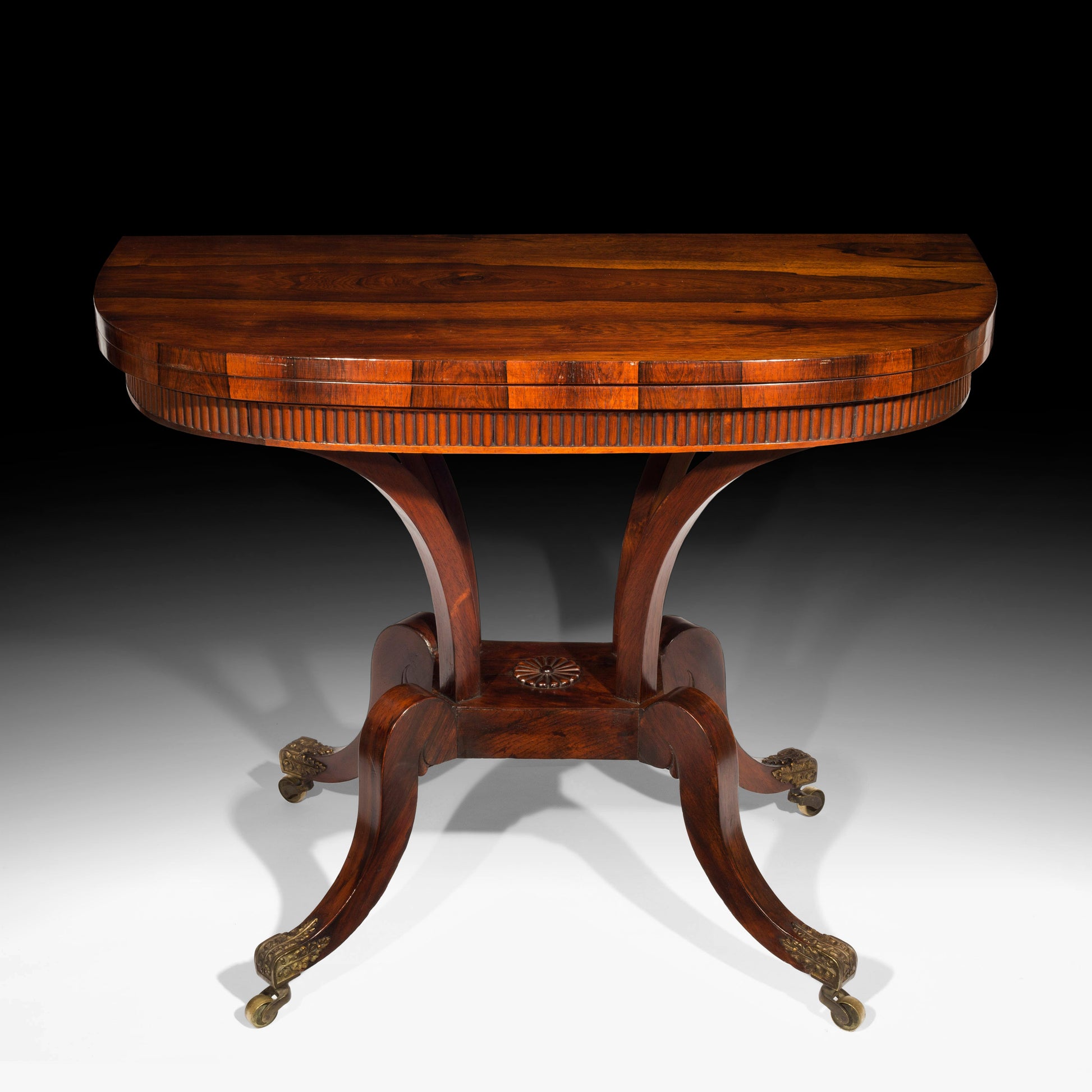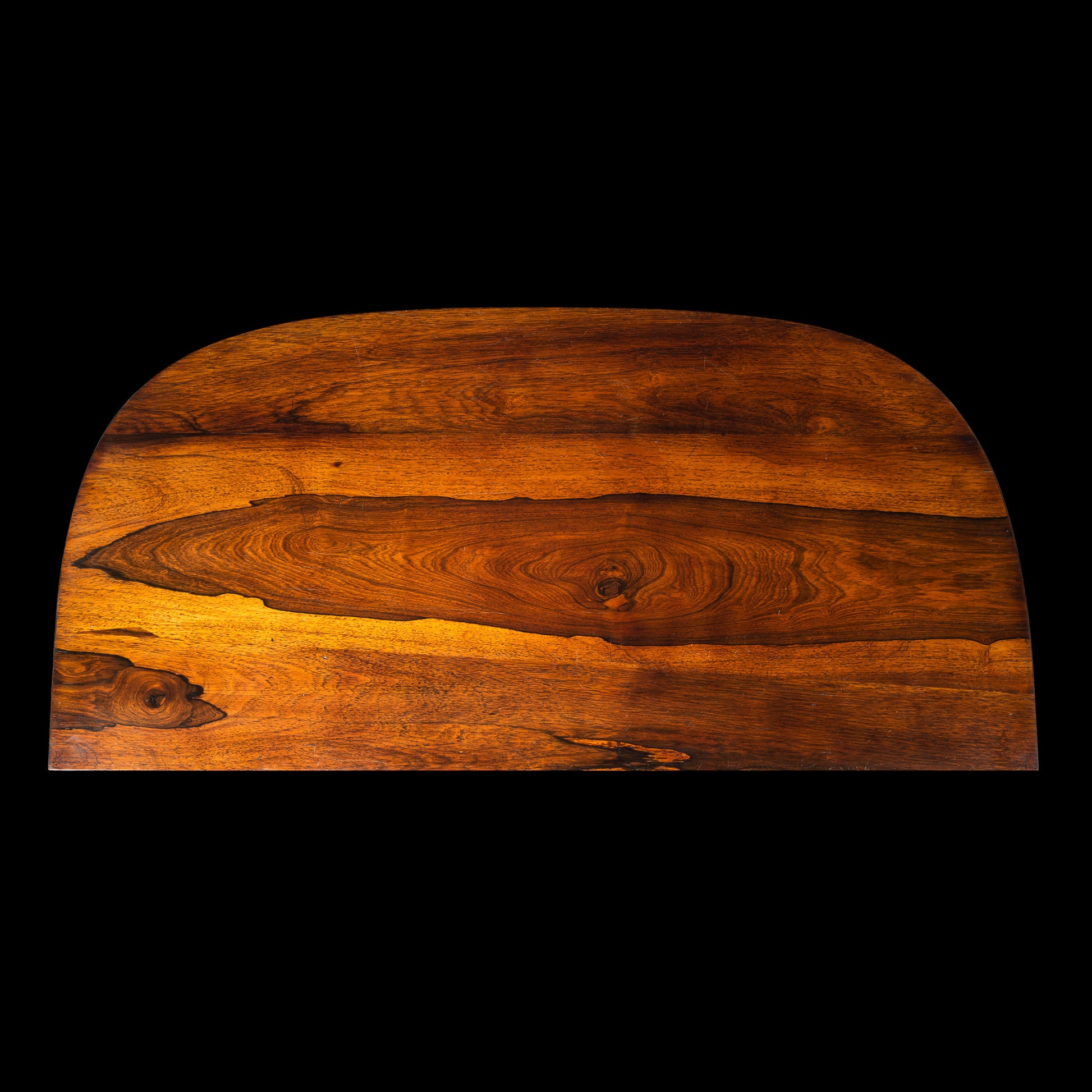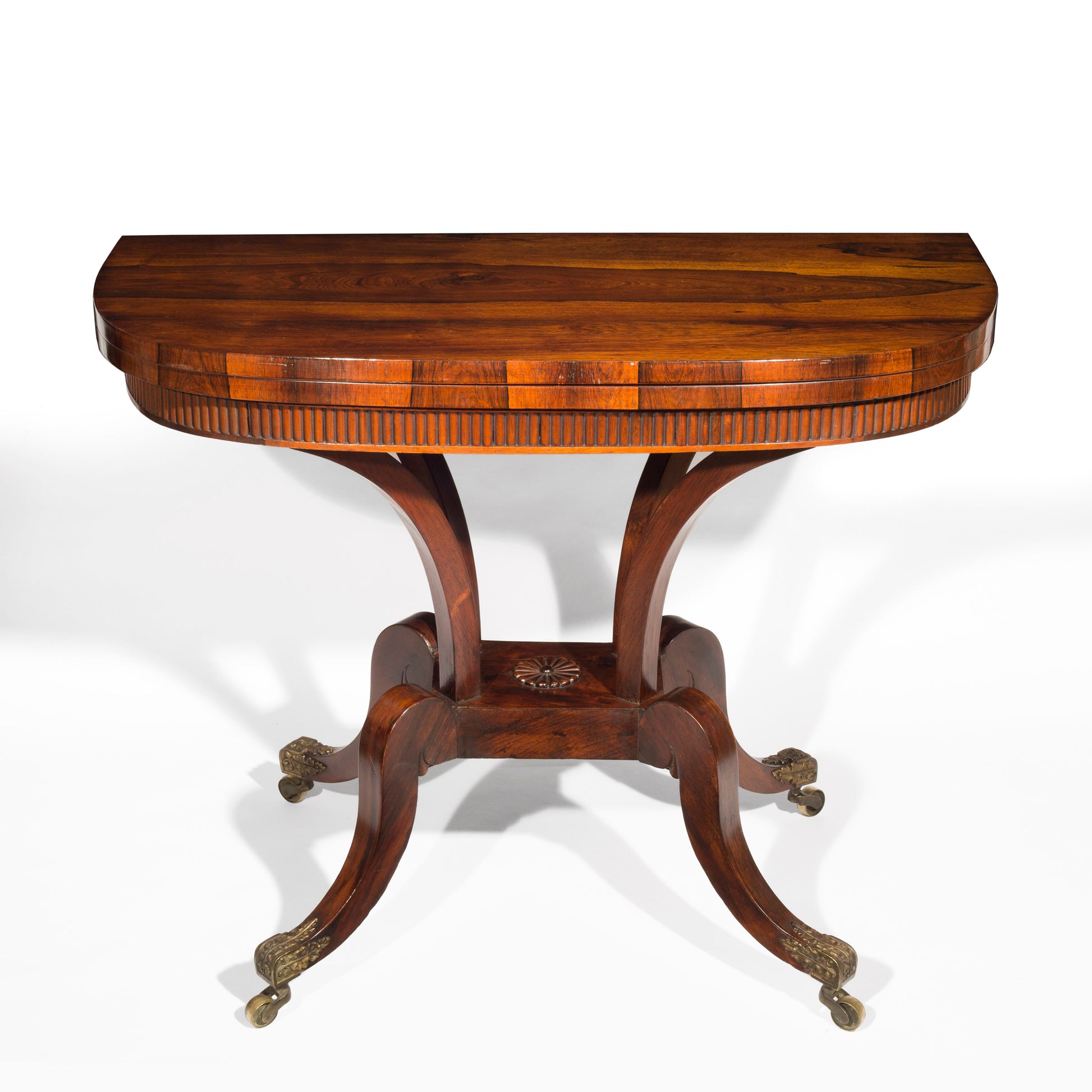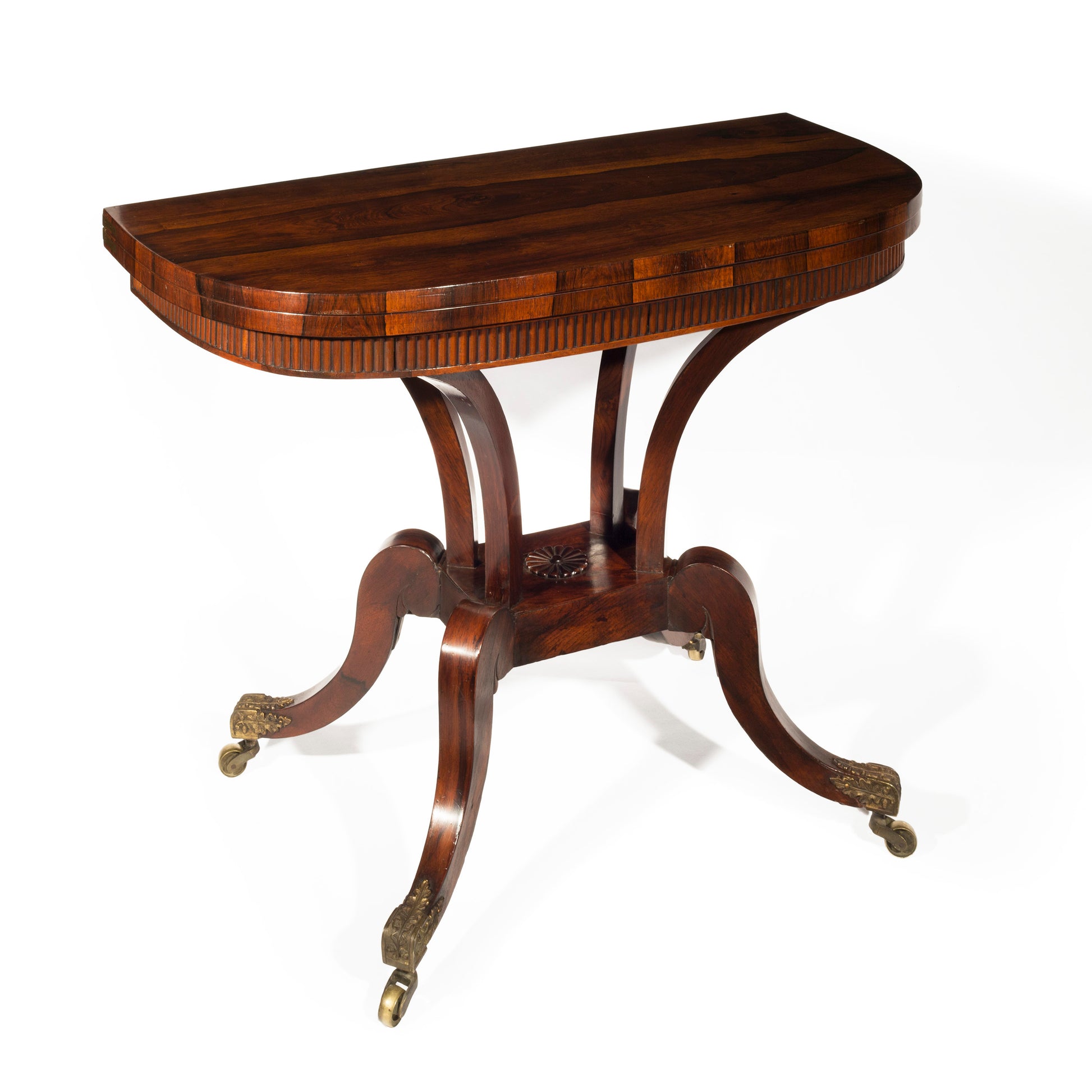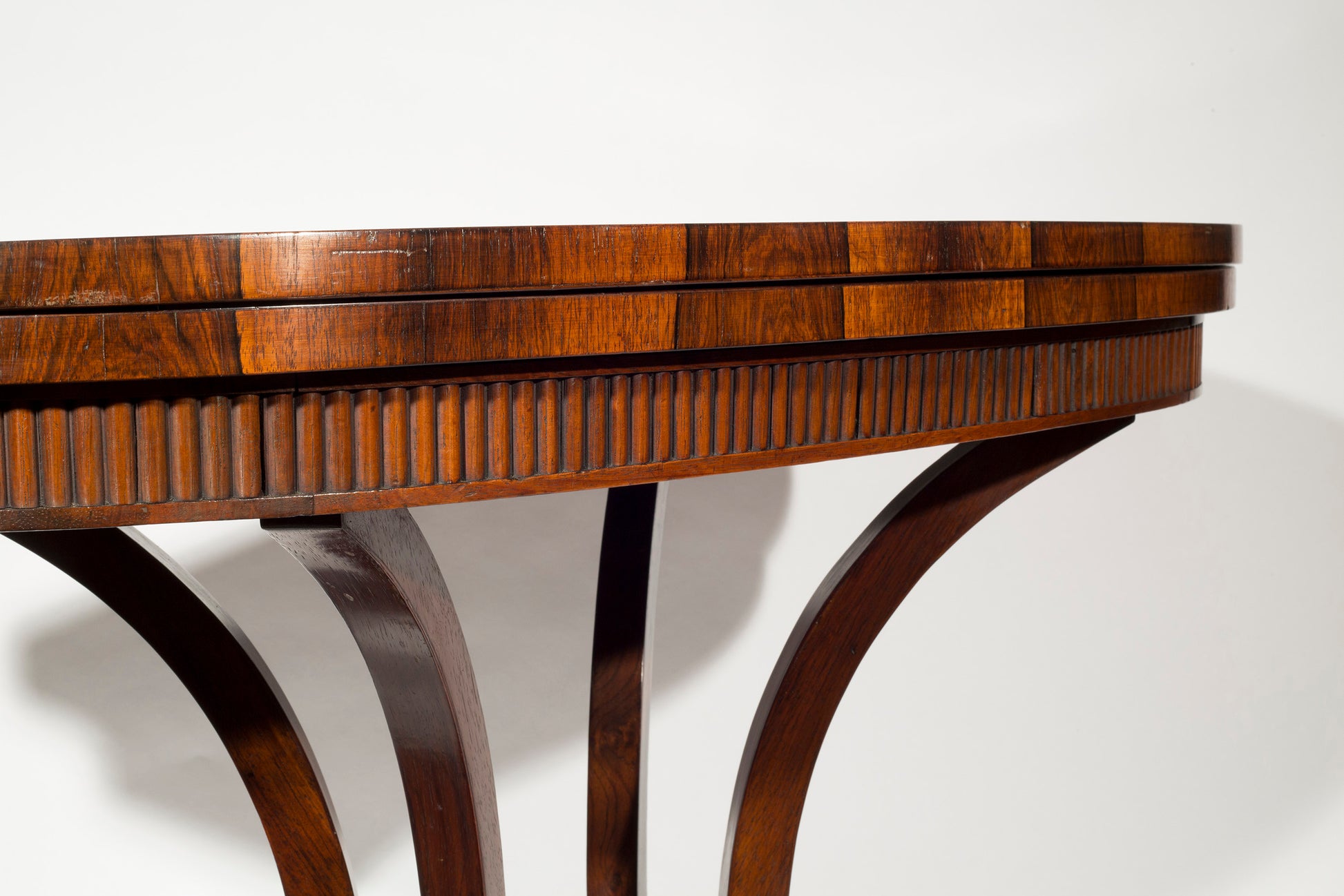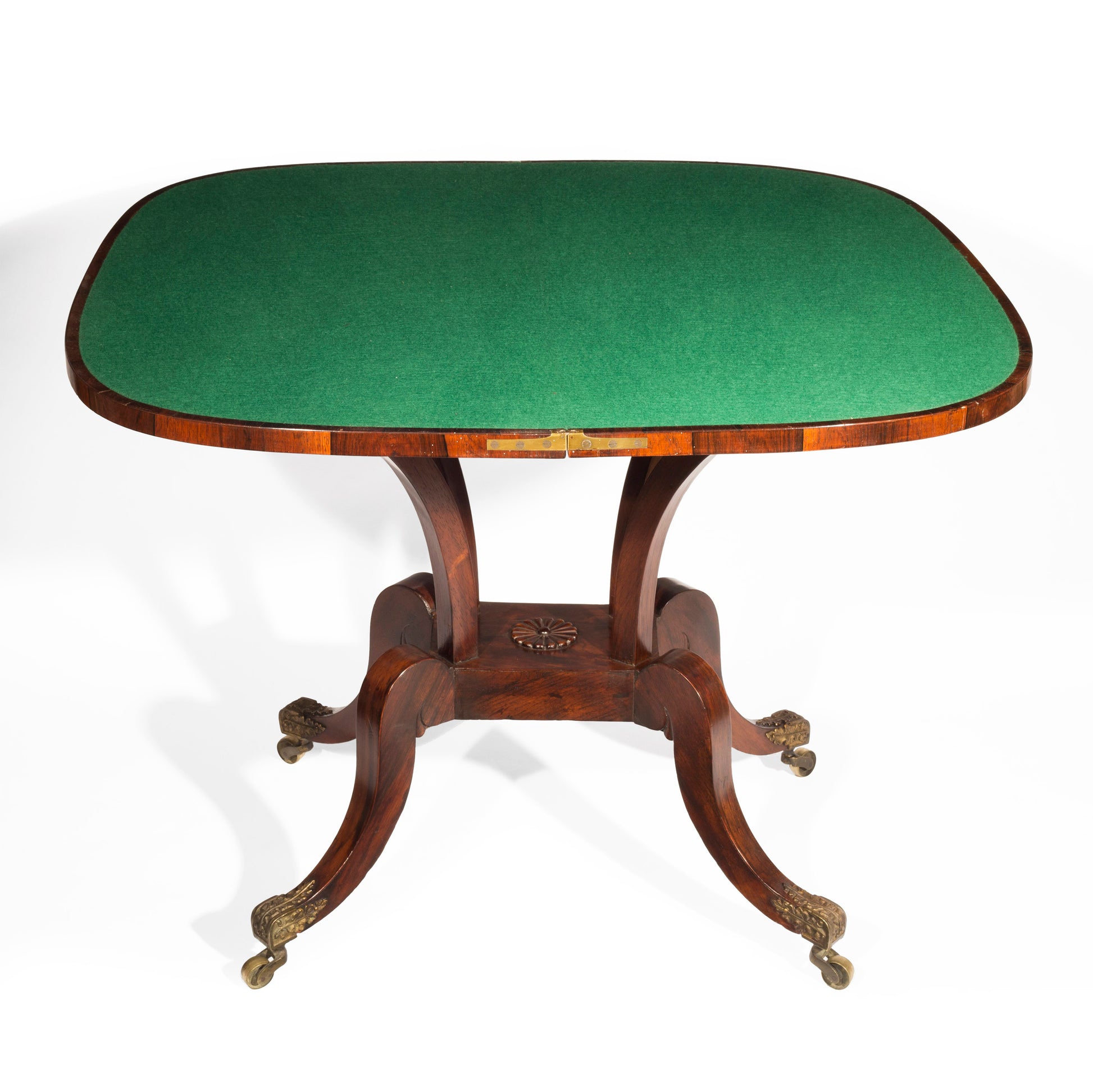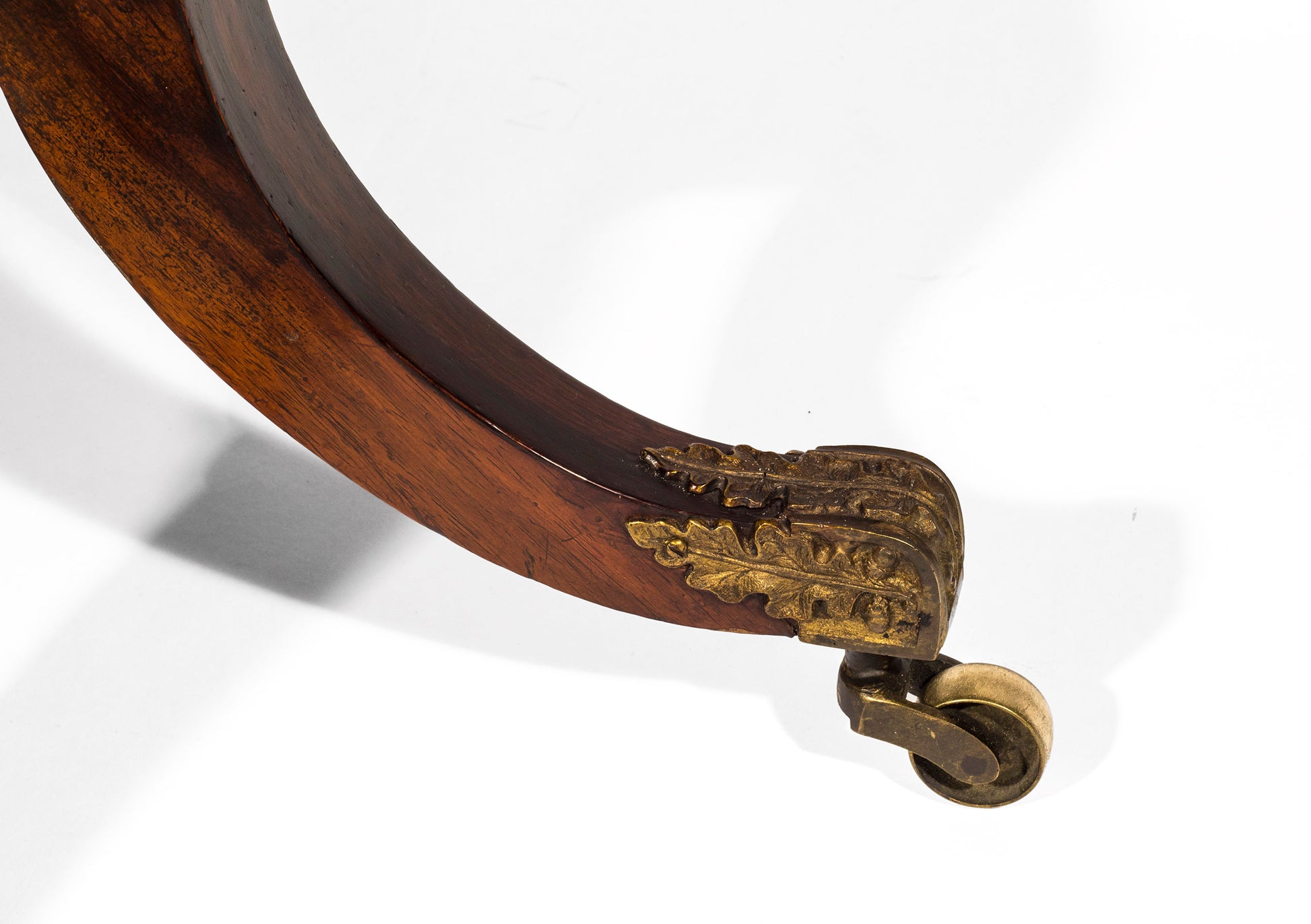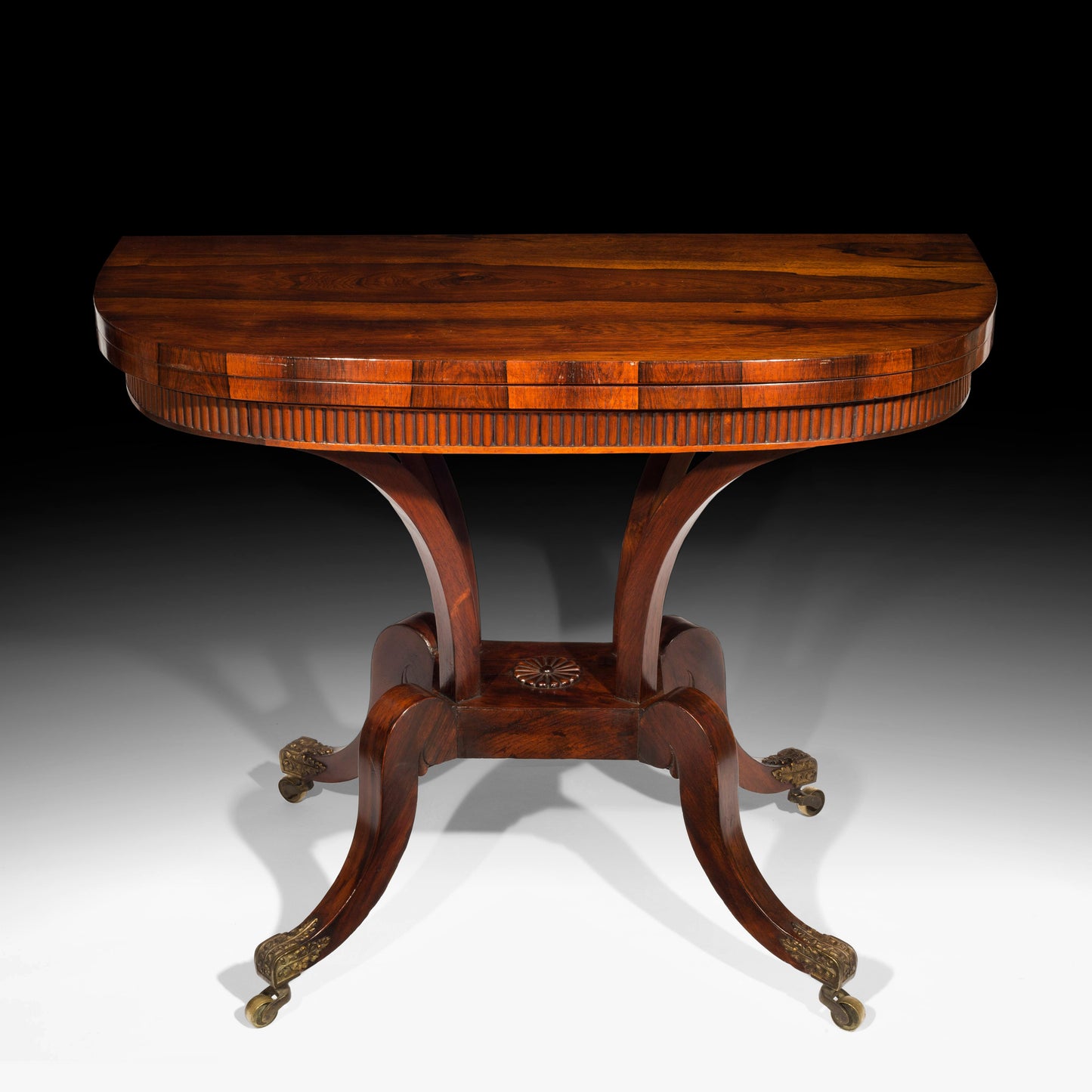
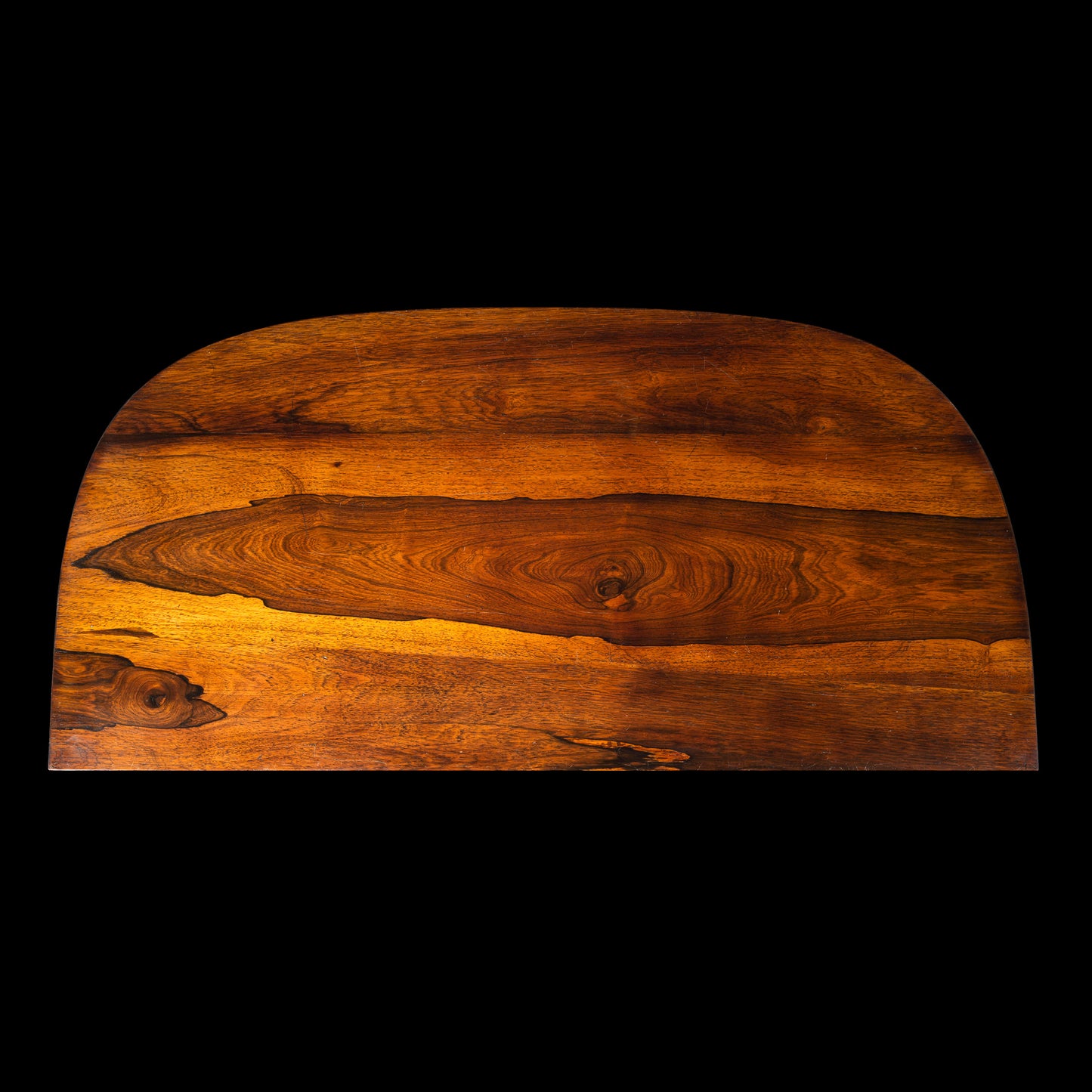
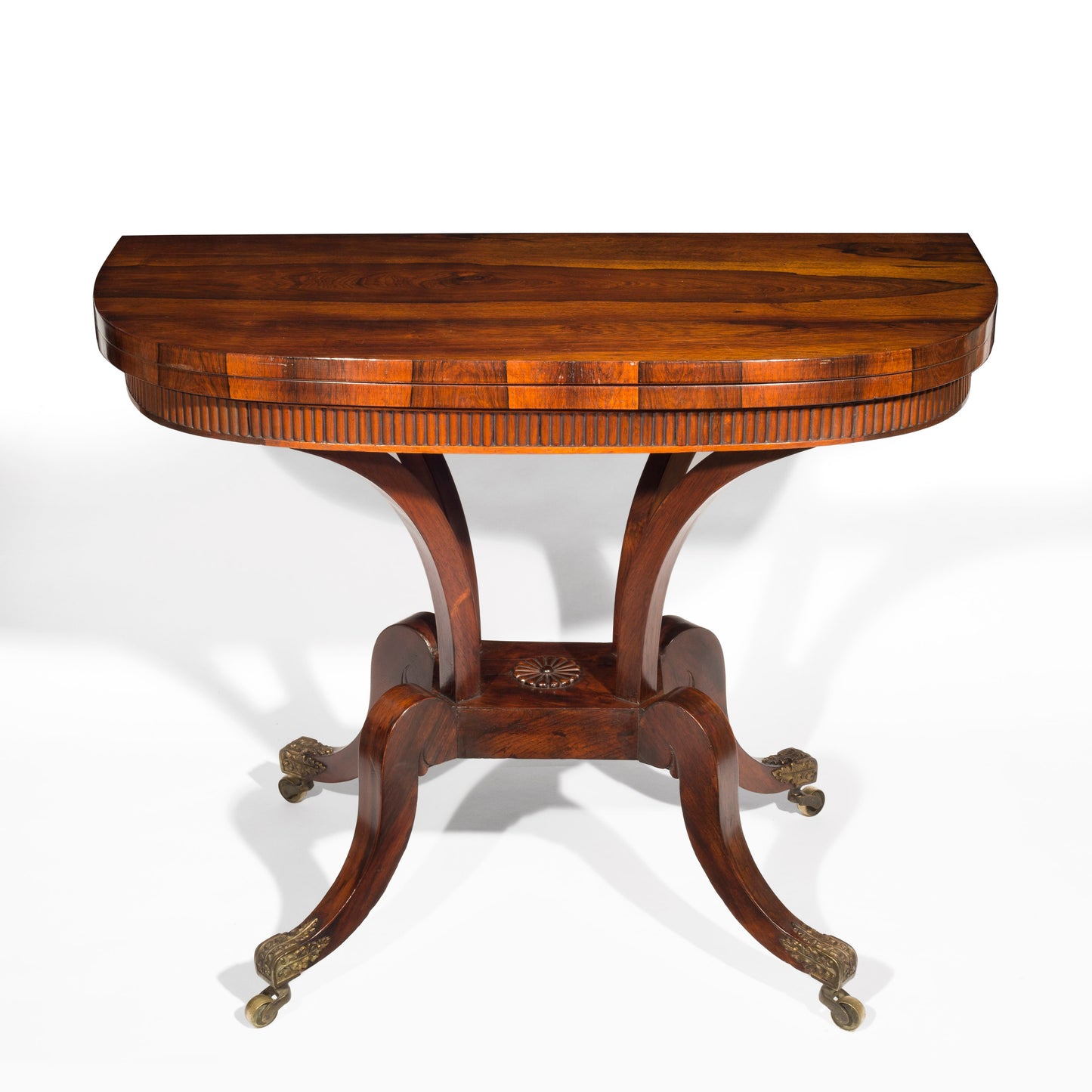
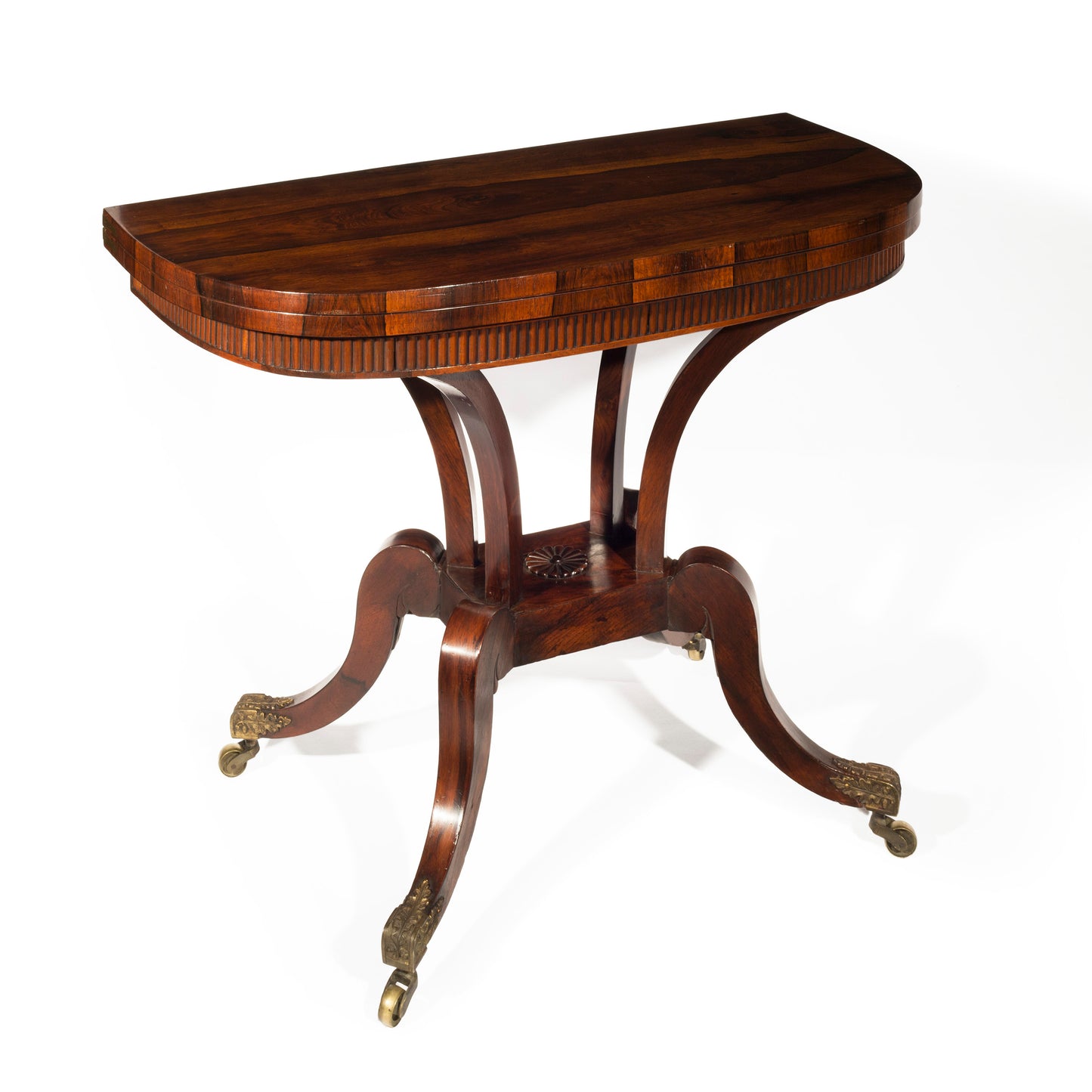
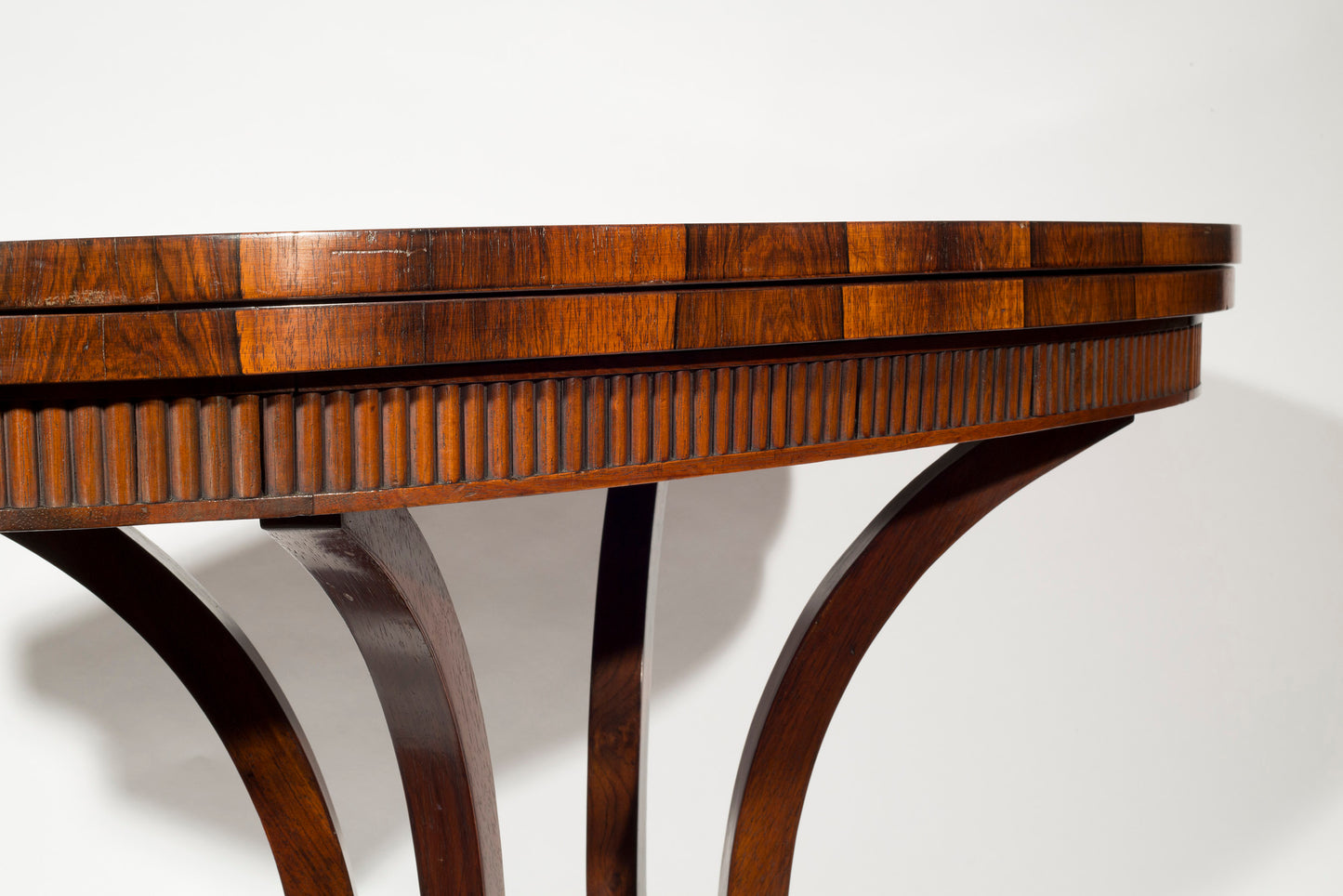
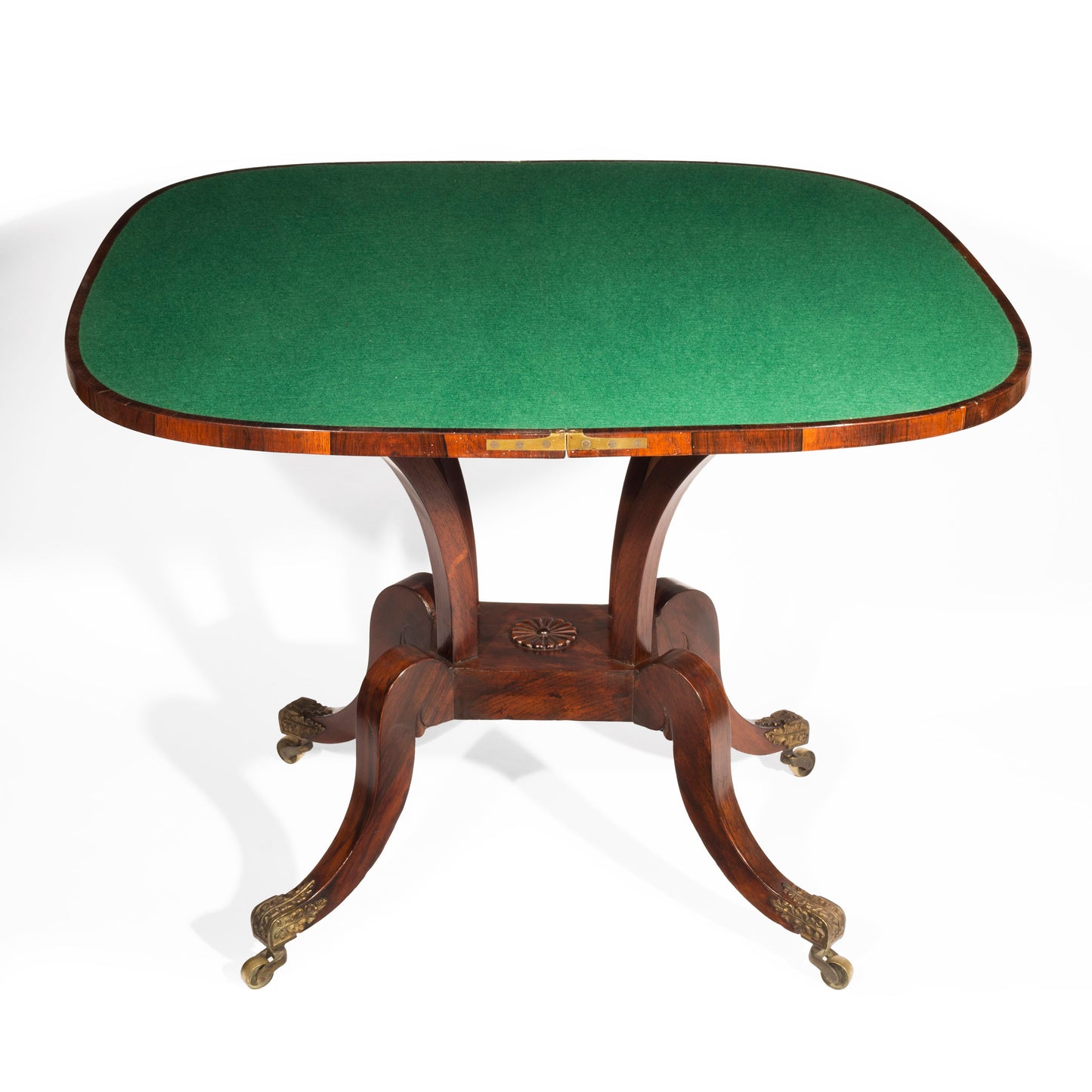
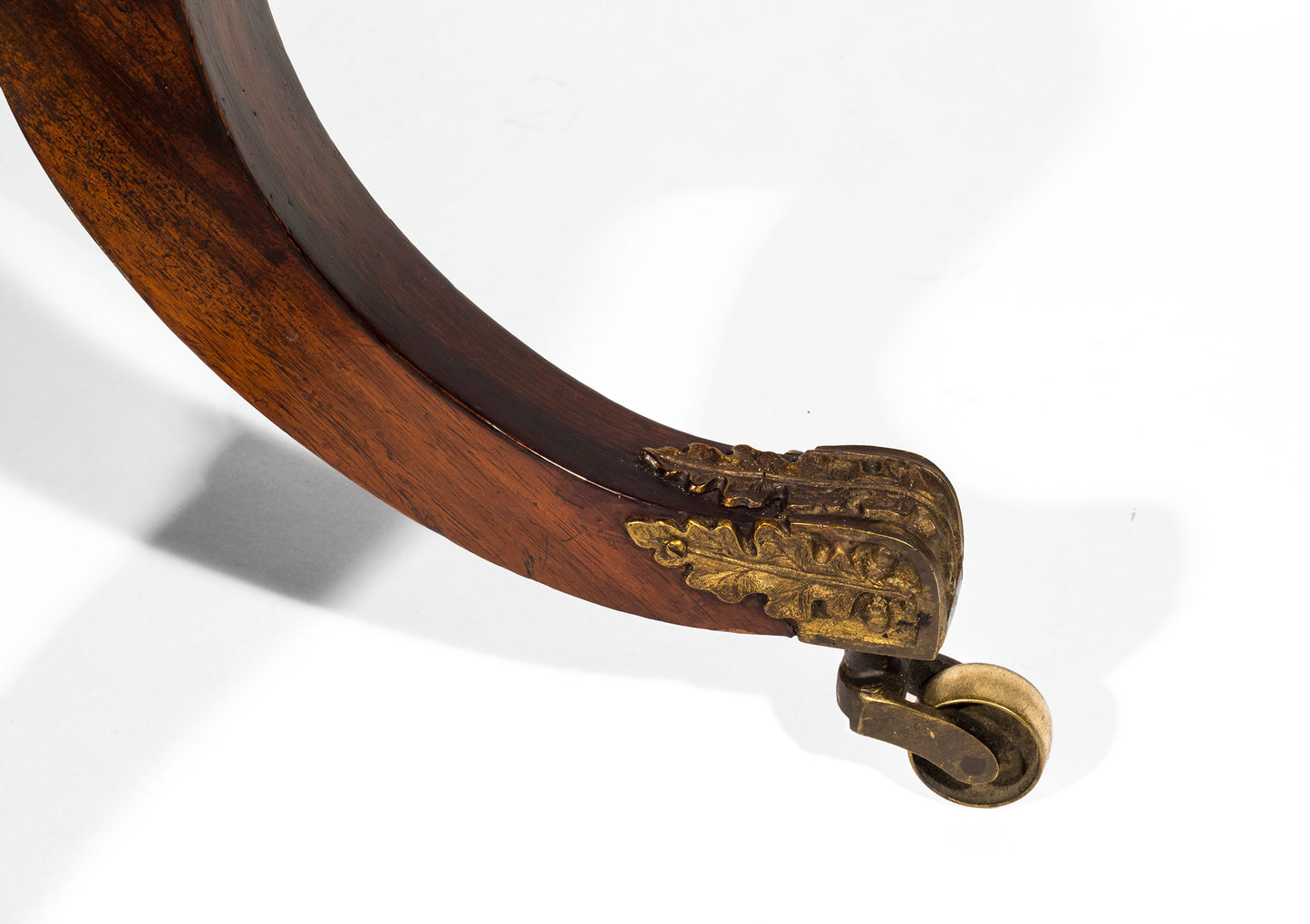
A fine early 19th century Regency period top games table in rosewood, attributed to William Trotter of Edinburgh,
Scottish, circa 1815.
The D-shaped hinged swivelling top, opening to a green baize-lined playing surface, above a reeded frieze, on incurved supports on a rectangular base centered by a patera, the whole raised on four sabre legs, ending in original ornate English oak-leaf moulded gilt brass caps and casters.
The distinctive design and construction of this table are indicative of the work of Scottish cabinet-maker William Trotter. A pair of 'eliptic card tables' in rosewood with similarly reeded friezes was supplied by Trotter for Paxton House, Berwickshire in 1814 (F. Bamford, 'A Dictionary of Edinburgh Furniture Makers 1600-1840', Furniture History, 1983, pl. 61), while a rosewood display stand, also for Paxton, exhibits a similar profile with its four incurved supports beneath an elliptical top (pl. 58).
One of William Trotter's (1772-1833) most significant commissions was for Paxton House, an 18th Century Robert Adam country house near Berwick-upon-Tweed. He also had a career outside of cabinet making, becoming a member of the Edinburgh Merchant Company and master of the Company in 1819 later becoming Lord Provost of the City of Edinburgh.
For a pair of virtually identical tables see Christie's New York, 7 April 2006, lot 337 ($18,000)

